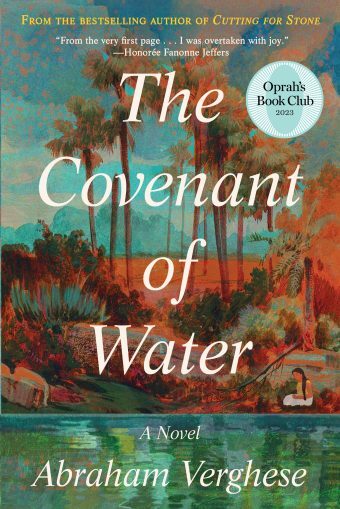 Moderators of NBRC’s
Comments
(group member since Jan 22, 2011)
Moderators of NBRC’s
Comments
(group member since Jan 22, 2011)
Moderators of NBRC’s
comments
from the Nothing But Reading Challenges group.
Showing 121-140 of 33,607
 Theme Book Of the Month
Theme Book Of the Month
Nearly the end of our year of world travels, we have reached South America! As ever, preference goes to authors from South American countries, but any books set in South America, exploring the wide range of experience there are welcome.
Nominations will be open until 27 September, UK evening
***Please pay special attention to the Rules and Guidelines listed below.***
Rules and Guidelines
1. Books nominated after the deadline will not be included in the polls. Sorry.
2. Each person is limited to nominating ONE book per category.
3. Please use the add book/author tool located at the top of the comment box when nominating a book. (Please make your nomination clear because side conversations do happen and we don't want to accidentally miss a nomination)
4. Please add the Goodreads synopsis for the book you nominate; you should also include an explanation of how it fits the theme for the month.
5. Books that were read as a past BOM will not be considered for the poll. (link to the sheet under the spoiler (view spoiler))
6. Books that are #2 or higher in a series will only be considered if all earlier books in the series have been a past BOM.
7. Books must be published at the time of nomination.
8. If your book is successful in being picked as the BOM you are expected to actively participate in the discussion. This will include writing a set of DQs as well as engaging in conversations.
The BOM nominations are for our members to nominate a book they are truly interested in and have no affiliation with. Promotional activity is NOT permitted and nominations that the Moderators perceive to be promotional will be deleted without warning
Aug 31, 2025 06:56AM
Aug 31, 2025 06:56AM
Aug 31, 2025 06:56AM
 Chapter Breakdown
Chapter Breakdown
Date Chapters Pages MPDQs
Sept 5 - Part 1 - Chap 1-13 - Catherine
Sept 6 - Part 2 - Chap 14 - 27 - Lexi
Sept 7 - Part 3 Chap 28 - 44 - Amanda
Sept 8 - Break
Sept 9 - Part 4 - Chap 45 - 56 - Catherine
Sept 10 - Part 5 - Chap 57 - 69 - Lexi
Sept 11 - Part 6 - Chap 70 - 84- Amanda
Guidance for DQ setters
Aim for a reasonable number of questions: 4 - 5 is typical. Please don't post too many - any more than 7 gets unwieldy!
Use consecutive numbering of the DQs for your days. So, for example, if Day One is posted as questions 1-4, Day Two should start at number 5 etc.
Don't worry too much about your questions: you aren't being tested on how clever your questions are!
Hints and tips:
- Is there a quote that jumped out at you? Use that in a question.
- What about the characters - do they generate strong feelings? No feelings? - either way, we can explore that!
- What about that plot twist?!
- Explore the writing style: is there an unusual structure being used? what's the tone of voice like? or the point of view?
Want more information about how NBRC runs their Book of the Month discussions? Check out the information here
Aug 31, 2025 06:55AM
 The Covenant of Water by Abraham Verghese - Sep 25 Theme BOM - South and South East Asisa
The Covenant of Water by Abraham Verghese - Sep 25 Theme BOM - South and South East Asisa
From the New York Times-bestselling author of Cutting for Stone comes a stunning and magisterial epic of love, faith, and medicine, set in Kerala, South India, following three generations of a family seeking the answers to a strange secret
Spanning the years 1900 to 1977, The Covenant of Water is set in Kerala, on India’s Malabar Coast, and follows three generations of a family that suffers a peculiar affliction: in every generation, at least one person dies by drowning—and in Kerala, water is everywhere. At the turn of the century, a twelve-year-old girl from Kerala's Christian community, grieving the death of her father, is sent by boat to her wedding, where she will meet her forty-year-old husband for the first time. From this unforgettable new beginning, the young girl—and future matriarch, Big Ammachi—will witness unthinkable changes over the span of her extraordinary life, full of joy and triumph as well as hardship and loss, her faith and love the only constants.
A shimmering evocation of a bygone India and of the passage of time itself, The Covenant of Water is a hymn to progress in medicine and to human understanding, and a humbling testament to the hardships undergone by past generations for the sake of those alive today. Imbued with humor, deep emotion, and the essence of life, it is one of the most masterful literary novels published in recent years.
=======
nominator:
Aug 31, 2025 06:52AM
Aug 31, 2025 06:52AM
Aug 31, 2025 06:52AM
 Chapter Breakdown
Chapter Breakdown
Date Chapters MPDQs
16 / 17 Sep Prologue - 2008 57% Lisa AG
18 / 19 Sep 2015 - Epilogue 100% Cat
Guidance for DQ setters
Aim for a reasonable number of questions: 4 - 5 is typical. Please don't post too many - any more than 7 gets unwieldy!
Use consecutive numbering of the DQs for your days. So, for example, if Day One is posted as questions 1-4, Day Two should start at number 5 etc.
Don't worry too much about your questions: you aren't being tested on how clever your questions are!
Hints and tips:
- Is there a quote that jumped out at you? Use that in a question.
- What about the characters - do they generate strong feelings? No feelings? - either way, we can explore that!
- What about that plot twist?!
- Explore the writing style: is there an unusual structure being used? what's the tone of voice like? or the point of view?
Want more information about how NBRC runs their Book of the Month discussions? Check out the information here
Aug 31, 2025 06:52AM


The extraordinary novel that asks: Can a name change the course of a life?
In the wake of a catastrophic storm, Cora sets off with her nine-year-old daughter, Maia, to register her son's birth. Her husband, Gordon, a local doctor, respected in the community but a terrifying and controlling presence at home, intends for her to name the infant after him. But when the registrar asks what she'd like to call the child, Cora hesitates...
Spanning thirty-five years, what follows are three alternate and alternating versions of Cora's and her young son's lives, shaped by her choice of name. In richly layered prose, The Names explores the painful ripple effects of domestic abuse, the messy ties of family, and the possibilities of autonomy and healing.
With exceptional sensitivity and depth, Knapp draws us into the story of one family, told through a prism of what-ifs, causing us to consider the "one . . . precious life" we are given. The book’s brilliantly imaginative structure, propulsive storytelling, and emotional, gut-wrenching power are certain to make The Names a modern classic.
=======
nominator:

 Monthly Challenges
~ Spessartite Coin
Monthly Challenges
~ Spessartite Coin 
Earn your Spessartite Coins with the Monthly Challenges joined on or after April 1, 2016.
To Earn a Spessartite Coin:
Learn about Gem coins here

Duration: September 1- September 30
Levels:
Mini Slide: 2-5 books
Medium Slide: 5-9 books
Slide: 10-15 books
Maxi Slide: 16+ books
Rules:
Using slide maze above, bring dots to similar colored squares.
Moves:
- move up: book with even number of words in title (an, a, the can be excluded)
- move down: book with odd number of words in title (an, a, the can be excluded)
- move right: book with even number of letters in title
- move left: book with odd number of letters in title
Example

Option 1
Move dot on the board by 'hitting walls'. One direction equals one move. When it hits the wall it changes the direction until next wall or getting to the right square.
In case of blue dot it means two moves: 1 right and 1 down.
R: The Lies of Locke Lamora by Scott Lynch - 20 letters
D: The Catcher in the Rye by J.D. Salinger - 5 words
Option 2
Move dot square by square in any direction you want as long as it reaches right square in the end.
You can also move diagonally but in that case you have two rules to follow!
In case of blue dot it has 4 moves right and 2 down.
R: Ten Things I Love About You by Julia Quinn - 22 letters
R: Treasure Island by Robert Louis Stevenson - 14 letters
R: My Name Is Rapunzel by K.C. Hilton - 16 letters
R: The House Girl by Tara Conklin - 12 letters
D: Wings of Fire by Charles Todd - 3 words
D: Dancing at Midnight by Julia Quinn - 3 words
Example for diagonal (right-down)
RD - The Hunger Games by Suzanne Collins - 14 letters & 3 words
Extra challenge:
If you think it's too easy, here is something extra for you: One color=one genre.
Pick a color and associate it with a genre. Moving that dot means reading only books from that genre.
But be careful if you're reading more than one color and your lines cross!
Example:
blue = mystery
red = romance
yellow = young adult
green = fantasy
blue+red = romantic suspense


Feed Your Readers, the NetGalley Challenge
Duration: Monthly
How to Participate:
The NetGalley Challenge is designed to not only get you to read your NetGalley books, but to also advertise your reviews for others to see because after all, that's what NetGalley is all about.
Though you may pop in/out at any time, the NetGalley Challenge will run on a monthly basis so you are able to see progress being made.
1. At the beginning of the month, post any/all of the following:
a: How many books on your NetGalley shelf
b: What books are on your NG shelf
c: What your Netgalley feedback ratio is
2. During the month, read the NetGalley books that you can AND update your post with your reviews. (You can do this after each book or wait until the end of the month.)
3. At the end of the month, update your post and with:
a: What books you read
b: Link(s) to your review(s)**
c: Your updated shelf count
d: Your updated books to read
e: Your updated ratio
Then start a new post for the next month!
**When linking your reviews, please link only to the book(s) here at GoodReads. At this time, linking to a personal blog is not allowed. Thank you!
 How to Participate:
How to Participate:The Audiobook Challenge is designed to not only help you to read your audiobooks, but to also find out about other great audiobooks from other challenge participants!
Though you may pop in/out at any time, the Audiobook Challenge will run on a monthly basis so you are able to see progress being made.
There are no minimum page requirements, and you can read abridged or unabridged audiobooks!
1. At the beginning of the month, post :
a: How many audiobooks in total you want to read for the month
b: How many audiobooks in the monthly category you want to read
c: Post the audiobooks (as you decide on them) by linking them to Goodreads in your post
2. During the month, read the audiobooks that you can AND update your post with your reviews. (You can do this after each book or wait until the end of the month.)
3. At the end of the month, update your post and with:
a: What books you read
b: Link(s) to your review(s) - note: can only be linked to Goodreads and not an external site
c: How many audiobooks you have read for this challenge this year
Then start a new post for the next month!
FORMAT YOU CAN COPY AND PASTE:
Start of Month
Total audiobooks to read:
Audiobooks in monthly category to read:
Books in category:
FINISHED
End of Month
Total audiobooks read this year:
Audiobooks in monthly category read:
MY MONTHLY RECOMMENDATION (and why):
===============
EXAMPLE : (under spoiler)(view spoiler)


~ Monthly Audiobook Challenge ~
Each month we will have a different theme of audiobook for you to listen to.
Read one, two, three, or thirty. Up to you! Just post at the start of the month which books you will read in the category, update through the month and post a link to your Goodreads review (no links to external sites).
Let's find some great audiobooks together!
Duration: Monthly
September 2025 Theme:
◈ Get to that series
Read a book that in a series that you started more than a year ago and haven't continued yet (can be any # in the series)


Congratulations to the winners of Tower Teams XI: Around the World
Team Empire State Building!
We hope everyone enjoyed touring the globe :)






